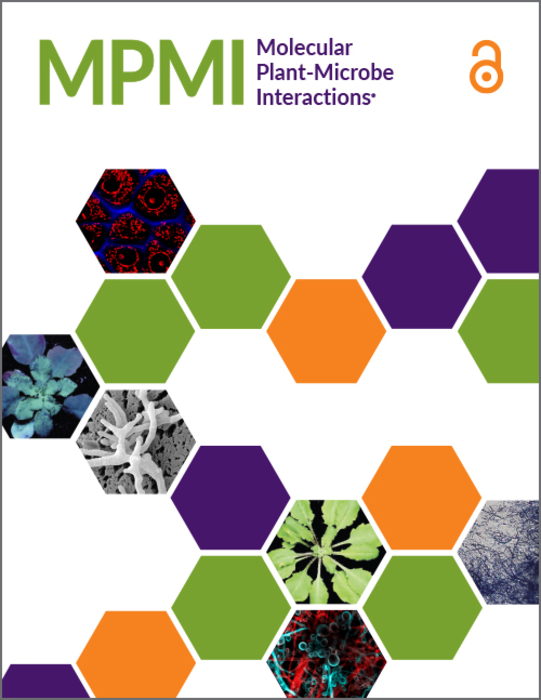For a fungus, the right “accessories” can make or break a relationship with a plant

Credit: APS
For a fungus, the right “accessories” can make or break a relationship with a plant
Plants interact with a diversity of organisms over the course of their lifetime, but even very similar microbes can cause opposite reactions. Two strains of the fungus Fusarium oxysporum (Fo) share a core genome, but one is a beneficial endophyte while the other is a detrimental pathogen causing wilt and death. A new study, published in the Molecular Plant-Microbe Interactions journal, tried to tease apart why these two strains cause such opposite reactions, and more generally how plants respond differently to useful and harmful microbes, by exploring the interaction of these two strains with the model plant Arabidopsis.
As explained by senior author Li-Jun Ma, “strain-specific interactions with a common host are likely dictated by the accessory chromosomes from each F. oxysporum genome.” Accessory chromosomes are extra pieces of genetic material that are considered to be more plastic in that they move and change based on the lifestyle that the fungus has, unlike the core genome. Like the gadget laboratory in a spy movie, the accessory chromosomes of Fo strains contain tools used to infiltrate the plant and shut down defenses. Using closely related strains that differ in accessory chromosomes “allows a comparative study that minimizes genetic differences between strains to address the underlying mechanism that results in distinct phenotypes (growth promotion or disease or even death),” says leading author Li Guo.
In this study, metatranscriptomic data reveals that most plant genes (about 80%) are expressed similarly in response to both fungal strains across timepoints over four days. By just twelve hours, the most obvious differences in plant response are occurring. Co-first author Houlin Yu explains that “it is important to realize that plants can rapidly react to signals of microbial presence by changing their gene expression.” For example, plant defense-related genes are induced by both the endophytic and pathogenic strains, but the endophyte is better able to suppress these genes. The other host genes that varied include plant growth-related genes that were reduced in expression when the pathogen was present, whereas nitrogen uptake and metabolism genes were increased in expression (upregulated) when the endophyte was present.
The accessory chromosomes are also where a lot of the gene expression changes were seen in the fungal strains. The endophytic strain upregulated genes involved in cell signaling and nutrient transport, while the pathogenic strain unsurprisingly upregulated those enriched for virulence or detoxification roles. Identifying the fungal genes with changes in expression on the accessory chromosomes that correspond to the ultimate outcome of plant health tell researchers what to investigate further to increase disease resistance and promote plant growth. Ma emphasizes that, “This research has a profound effect on plant and perhaps even animal immunology, suggesting that cells have a remarkable flexibility and plasticity in response to microbes of same species but genetically different.”
For more information, read “Metatranscriptomic Comparison of Endophytic and Pathogenic Fusarium–Arabidopsis Interactions Reveals Plant Transcriptional Plasticity.”
Journal
Molecular Plant-Microbe Interactions
DOI
10.1094/MPMI-03-21-0063-R
Method of Research
Experimental study
Subject of Research
Not applicable
Article Title
Metatranscriptomic Comparison of Endophytic and Pathogenic Fusarium–Arabidopsis Interactions Reveals Plant Transcriptional Plasticity
Article Publication Date
11-Oct-2021




